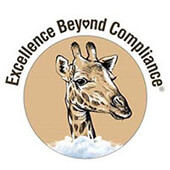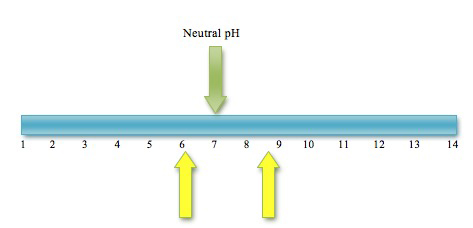Academy Contributors
Getting Better All the Time: Doing Greater Good for the Animals in Our Care
 By James F. Gesualdi By James F. Gesualdi
"To keep ahead, each one of us, no matter what our task, must search for new and better methods—for even that which we now do well must be done better tomorrow." —James F. Bell
My journey in Animal Law, primarily within the marine mammal and zoological communities, has been inspired by animals and, of course, by people—sometimes by people holding very different perspectives. Hence, the powerful quote from a fellow Long Islander, Walt Whitman, which sets the stage for Chapter 11 in Excellence Beyond Compliance: "Enhancing Animal Welfare Through the Constructive Use of the Animal Welfare Act."
"Have you learned lessons only of those who admired you, and were tender with you, and stood aside for you? Have you not learned great lessons from those who braced themselves against you, and disputed the passage with you?"
There are countless different perspectives on recent, seemingly dramatic developments involving the marine mammal/zoological communities. In a world of animal matters marked by conflict, conversation and collaboration on matters of mutual concern are most welcome. As a general rule, constructive conversations and collaborations on behalf of animals are good things, no matter what differences in opinion or interpretation are brought to the table (and however imperfect the change or progress).To make the most of ongoing developments, we must take responsibility for doing greater good for the animals in our care and other people through the following actions.
- Making animal welfare an explicit overriding priority. The primary focus should be on the well-being of the animals in our care. Caring for live animals requires that their welfare be the overriding priority.
- Continuously improving animal welfare. The Academy's Animal Welfare course and Dr. Lance Miller and Greg Vicino's Five Opportunities to Thrive provide outstanding insights for meaningfully enhancing animal welfare. One of the best ways to demonstrate commitment to animal welfare is adoption and implementation of Excellence Beyond Compliance® to ensure continuous improvement in animal welfare. The Excellence Beyond Compliance® approach represents an effective, practical philosophy for transforming the zoological world and the lives of animals and people everywhere. It is built upon hard-learned lessons and insights gained from decades of addressing, resolving, and overcoming challenges, and respectfully engaging critics and others. Columns such as this are a beautiful means of sharing practices that are the basis for a vision for the future of the zoological community. The fundamental elements of Excellence Beyond Compliance® are:
- Elevating animal welfare as an explicit priority
- Drawing upon our compassion for animals to be our very best
- Committing to continuous improvement in animal welfare
- Constructively using existing law and regulations arising from the Animal Welfare Act and associated processes for critical self-assessment and to drive ongoing advances
- Collaborating within our own groups, organizations, profession, and the zoological world; and with the full range of animal-related stakeholder interests.
- Elevating the way we engage each other. Elevating consciousness about animals is, as Pope Francis addressed in his Encyclical on the Environment, inextricably linked to our treatment of each other: "A sense of deep communion with the rest of nature cannot be real if our hearts lack tenderness, compassion and concern for our fellow human beings. …Everything is connected. Concern for the environment thus needs to be joined to a sincere love for our fellow human beings and an unwavering commitment to resolving the problems of society."
With a "One Heart" philosophy in mind, the simple premise put forward in many recent talks about Excellence Beyond Compliance® has been: "Getting more people to treat more animals with greater compassion, dignity, and respect is more likely when we treat each other with greater compassion, dignity, and respect."
Engaging each other and animal-related challenges constructively changes everything, and does so humanely and sustainably.
Join us to learn more about the Animal Welfare Act and animal welfare, when the Ask Animal Care series continues on Thursday, May 19, 2016, at 3 p.m. EDT, with special guests USDA APHIS Animal Care Regional Directors Elizabeth Goldentyer, DVM, and Robert M. Gibbens, DVM; Associate Deputy Administrator Dr. Andrea Morgan; and new Deputy Administrator Bernadette Juarez. Register now to participate and get further details: info@excellencebeyondcompliance.com.
"Success is simple. Do what's right, the right way, at the right time."
—Arnold H. Glasgow
©2016 James F. Gesualdi, P.C. The opinions expressed herein are solely those of the author. This is not, nor should it be construed as, legal advice.
Please email me at jfg@excellencebeyondcompliance.com to share the good you are doing (as only you can), or with any comments or questions on this column or suggestions for future ones.
For more information on Excellence Beyond Compliance® , visit info@excellencebeyondcompliance.com.
 Something Fishy Is Going On Something Fishy Is Going On
By Dr. Rob Jones, "The Aquarium Vet"
The pH of a solution refers to the level of acidity or basicity of the solution. The term pH is an abbreviation for the Power of Hydrogen. It is related to the hydrogen (H+) activity of a solution and the ionization of water:
2H2O ← → H3O+ + OH- ← → H+ + OH-
The H3O+ is in fact the hydronium ion, but in general discussion, it is reduced to H+, the hydrogen ion.
Generally, a low pH is acidic (high numbers of hydrogen ions H+) and a high pH is alkaline or basic (high numbers of hydroxyl ions OH-). The scale runs from 1 to 14, with 7 considered neutral pH. At a pH of 7, there are equal levels of hydrogen and hydroxyl ions. It is a negative logarithmic scale, which means that as the pH number goes lower, there is an increase in the number of hydrogen ions (H+). Thus, a pH of 7 has 10 times more H+ than a pH of 8. Subsequently, a pH of 6 has 100 times more H+ than a pH of 8.
The pH level in water probably has more effects than any other factor. The pH has one of the most profound effects on the toxicity of ammonia in the water. As the pH increases (more alkaline) the percentage of the toxic ammonia component increases. This was discussed in detail in the webinar on the nitrogen cycle. The pH of water is directly related to the level of hardness and alkalinity present in the water.
Fresh water can show an enormous range of variation, which is largely dependent on the local soil type. High pH (alkaline) levels will occur in lakes and streams that are surrounded by high carbonate-containing geography. This mainly relates to limestone (calcium carbonate CaCO3) and dolomite (calcium magnesium carbonate CaMg(CO3)2) regions. It is possible to have pH values up to 9.0 in these areas. The carbonate also provides significant buffering capacity.
Low pH occurs in lakes and streams associated with acid-sulphate soils (also called cat’s clay). Another factor that can lower the pH is the presence of decaying vegetation in the water, which produces organic acids (humic acids). This occurs in the Amazon basin.

The pH scale and normal range for freshwater fish survival (between the yellow arrows)
The pH of seawater is usually 8.1 to 8.3. The pH of seawater is very constant, due to the enormous buffering capability of the bicarbonate and borate systems. As a consequence, marine fish are more sensitive to pH changes than freshwater fish. Marine fish are only comfortable in the pH range of 7.5 to 8.5. Next month, we will look at some other water quality parameters.
E-quarist™ Courses—Academy Subscriber Special!
The San Diego Zoo Global Academy is excited to share an additional Academy subscriber benefit regarding our collaboration with Dr. Jones: as an Academy subscriber, you are entitled to a discount on the e-quarist™ courses.
For more information about the SDZGA discount, or to view our Trial Version, please contact katrina@theaquariumvet.com.au.
|